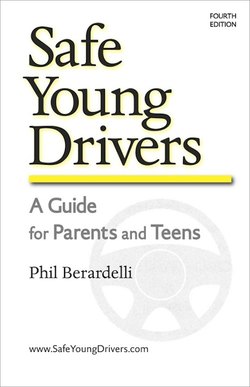Читать книгу Safe Young Drivers: A Guide for Parents and Teens - Phil Berardelli - Страница 4
ОглавлениеHow to Use This Book
In this age of the Internet, cell phones and Blackberrys, books seem to occupy a less-important role in our daily lives. That’s sad, though it’s a reality of modern society and a matter of personal preference. But sometimes books can be very useful, and driving instruction is one such time.
The best place to learn how to drive is on the road, not in front of a video screen or computer monitor. Good skills and road sense develop only through repeated and lengthy exposure to real situations and sensations. And information about driving is most valuable when it can accompany you.
You the parent and you the teen should read this book before getting started, and you should keep it—this being an electronic edition, via your reading device—in the vehicle during the lessons.
Certain sections of the book are intended for parents, while other sections are for teens. There’s also a crossover. Teens can’t use the book while driving, so they should study the relevant sections ahead of time, and parents should help teens through those sections during the lessons.
I have broken down the lessons as much as possible into simple steps, but there is a lot to remember. You both should refer to the book often. There’s an effective way to do this. It’s called Brief/Perform/Debrief. Here’s how it works:
—Before beginning a driving session, both of you should read the relevant text.
—During the lesson, the parent or instructor should refer to the text frequently to make sure the teen covers all of the material and performs the exercises correctly and well.
—After the lesson, both parties should spend a few minutes talking over how the session went. Did the teen understand everything? What went well? Were there difficulties?
Though the paperback edition of Safe Young Drivers contains a Lesson Log, meant to help you record the individual sessions and the teen’s performance, you can compensate by bringing a small notebook with you, or by creating a file for your notes on your handheld device. Use it to keep track of the material covered, the progress made and the problems that appeared.
Last, when all of the lessons have been completed, keep the book handy for quick reference whenever necessary—you never know when it might be useful.
TEN STEPS, FIVE THEMES
This book is about acquiring driving skills, but it’s also about learning and maintaining a good driving attitude. In fact, as we’ll discuss later, good attitude might be even more important than good skills.
This is true particularly during the early driving years, when those skills are still developing. Inexperience can be dangerous on today’s roads, but good attitude can compensate for the lack of skills. That’s why, in addition to 10 steps, there are five basic themes—approaches—to driving the teen should learn. I have introduced them at appropriate times and they appear at various places in the text.
The five themes are:
—CLEAR THE WAY
—LEARN THE LIMITS
—SHARE THE ROAD
—THINK AHEAD
—FEEL THE ROAD
The themes will appear in capital letters whenever they are included in the text, because they represent important information. As the specifics of the individual lessons fade into the past, the themes should linger in the memory. Parents and teens should try hard to retain them.
